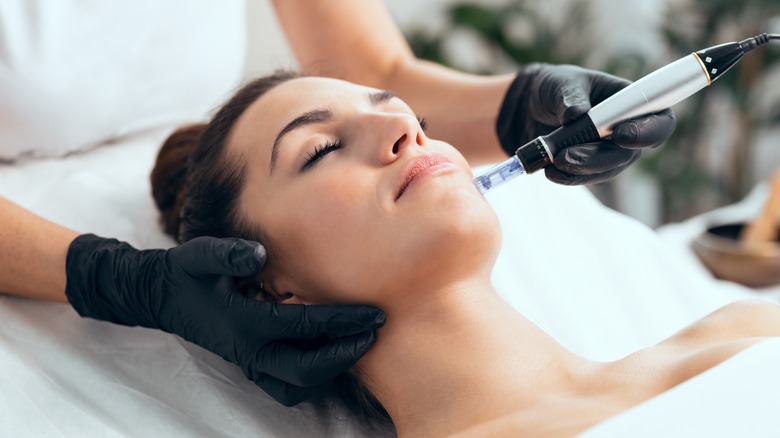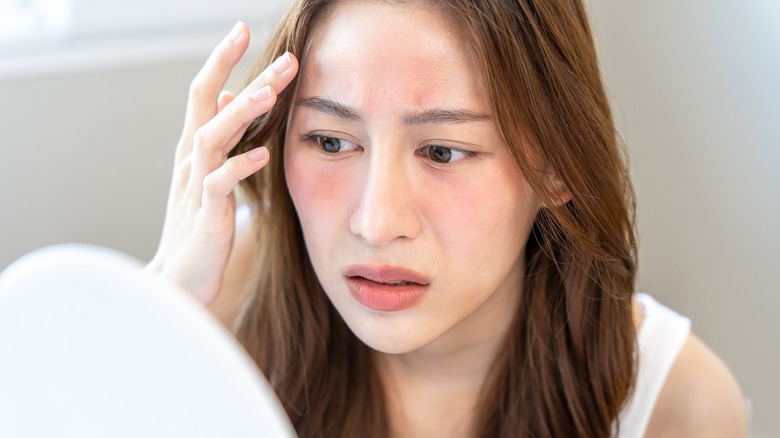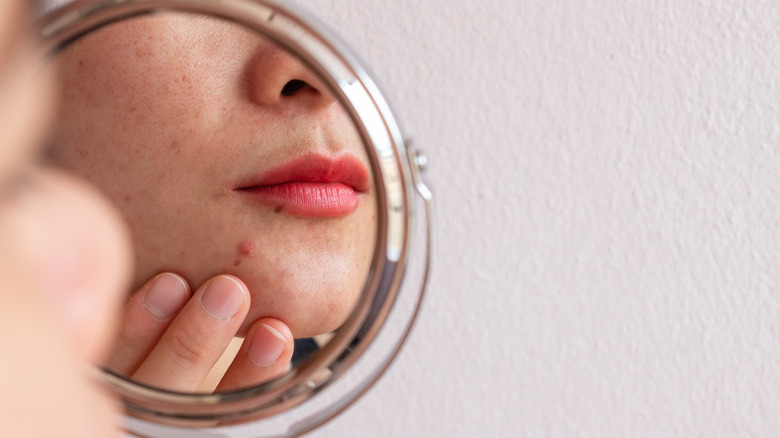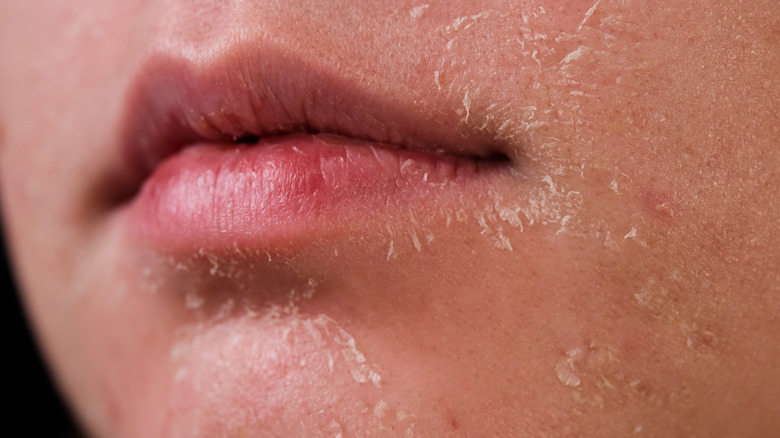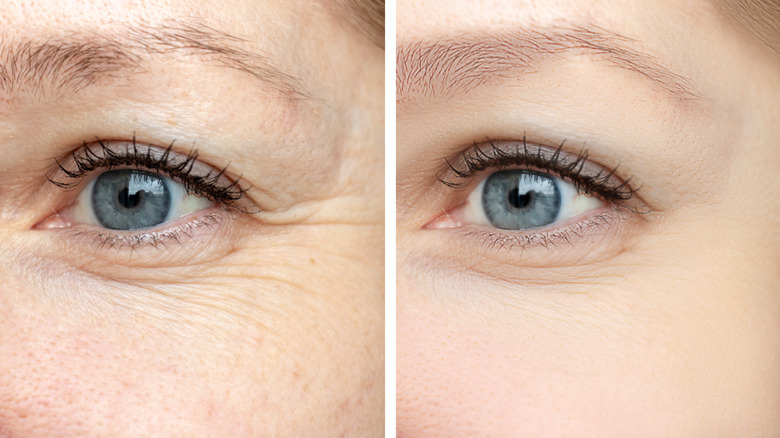What To Expect After Microneedling
Microneedling, a procedure that promises to smooth wrinkles, promote skin elasticity, and reduce the appearance of blemishes, has taken over as a new alternative to expensive laser treatments. During this facial, a doctor or esthetician will apply a numbing cream and then gently pierce the skin with a roller or pen-shaped tool lined with ultra-thin needles. Thanks to the numbing cream, you shouldn't feel much other than a light pressure during the procedure (via WebMD).
While intentionally causing damage to the skin might seem counterintuitive to its health, this procedure is actually used to stimulate the production of collagen. During the healing process, your skin makes elastin and collagen to repair itself, so, once your face heals, your skin should feel more bouncy, plump, and elastic. Once you get past the initial hurdle of being pricked by a bunch of needles, however, there is still a several-day-long healing process that's important to consider. Before you head over for your facial, it's best to do some research and learn what you should expect after you head home.
You'll likely experience redness
Microneedling is an inherently irritating procedure, and even if you're not experiencing pain, your skin will likely turn red and swell a bit as it heals. This reaction isn't anything to worry about — unlike other cosmetic procedures, you won't have any serious recovery time — but it can be a bit uncomfortable and sensitive to the touch. For about two days after your microneedling appointment, you'll likely just feel like you have a sunburn.
If this sensation is bothering you, you can use a cool, damp towel to tamp down the heat a bit. Moisturizing your skin frequently should also help speed along the healing process and reduce the annoying feeling of tight skin. Just make sure to avoid products that contain harsh or irritating ingredients until your skin bounces back, like retinol serums, exfoliants, and vitamin C. After the top layer of your skin fully heals, you can go back to your typical skincare routine.
You'll need to focus on skin protection
While your skin heals for the first few days, it's also a good idea to stay out of the sun. Your skin is attempting to repair itself, and exposing it to harsh rays can worsen your already sunburn-like side effects and cause more damage that you'll have to deal with down the line. Along with the obvious UV damage and possibility of developing an actual sunburn, sun exposure can dry out sensitive skin, the opposite of what you need during the healing process.
After the immediate effects have faded, it's safer to go out in the sun, but you should still be committed to regularly applying sunscreen for at least a few weeks after your appointment. SPF should already be used as a regular part of your skincare routine, but, even after the top layer of your skin appears healed, the deeper layers take some extra time to fully repair themselves.
It's necessary to avoid infection
While the actual process of a microneedling procedure might not feel as bad as a more serious injury, you're still dealing with open wounds. Because of this, it's necessary to avoid germs and keep your skin clean while it heals itself. If not, you could face breakouts or a more serious infection. According to Healthline, while rare, infections from unsterilized needles can happen. Look out for fever, headaches, hives, and nausea. If you experiencing any of these symptoms, head to the doctor right away.
Along with washing your face with a gentle cleanser while it heals, you should also avoid heavy workouts, saunas, and swimming pools for a few days to lower your risk of exposure to germs and sweat. It's also best to skip on the makeup for a bit. While it might be tempting to cover any redness you experience, frequently used makeup brushes and products can introduce bacteria into your healing skin.
Your face could peel
One of the most common side effects that people experience after a microneedling treatment is peeling, similar to the behavior of skin after a bad sunburn. Once your redness and swelling dies down, your skin could feel tight and dry, eventually flaking off in spots. Don't worry — in a few days this will slough off to reveal a smooth, glowy complexion underneath. Not everyone experiences peeling, but you'll likely still face patches and dry spots regardless of the severity level of your skin's dryness.
To avoid further damage and introducing harmful bacteria, continue washing your face with a gentle cleanser and cool water. Resist the urge to peel skin or go in with a more harsh form of exfoliation, and instead pat dry with a clean towel. Continue moisturizing routinely and applying sunscreen throughout the day. The flaky pieces of skin will naturally peel off once your skin is fully healed underneath.
You'll probably need multiple treatments
Microneedling is a fairly low-risk, high-reward procedure, but depending on the issues you're trying to treat, it could take multiple sessions to see results. If you're only hoping to plump your skin and add a bit of glow, one appointment is often enough to help you achieve your desired look, but, according to Jefferson Facial Plastics, you might need more routine procedures to tackle deep acne scarring or signs of aging.
Everyone's skin is different, so it will react to this procedure differently, too. To determine exactly how many sessions you'll need, talk to your esthetician or doctor to develop a treatment plan that can tackle exactly what issues you're looking to reduce, from enlarged pores to fine lines. Whether you're planning for a one-time treatment or an extended series of microneedling appointments, properly taking care of your skin after you leave the office is the best way to ensure you're left with positive and visible results.
